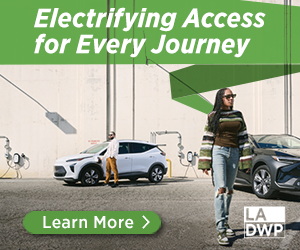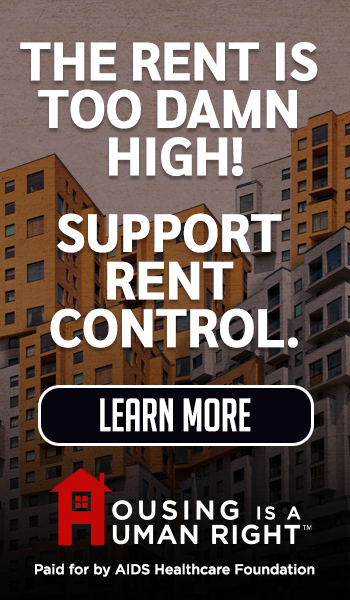Comments
CLEAN POWER - With a slogan that sadly impedes clean energy and climate warming objectives, President Trump declared, “drill, baby, drill,” and has moved to speed up fossil fuel development. A “hit list,” obtained by the Associated Press, has even been created which identifies projects facing impairment, and it includes wind, solar, battery storage and the electric vehicle infrastructure.
Also facing immediate ravaging are heavy industries which have been funded to transition away from fossil fuels, as well as the decarbonizing of buildings
California projects whose U.S. funding was cut:
* A $500 million facility to develop carbon-neutral cement.
* A $270 million for an air-cooled carbon capture and sequestration facility.
* A $75 million project which would have demonstrated the viability of replacing gas-powered furnaces with hybrid electric melter.
The hard and rewarding progress made by Los Angeles over many years may be wiped out.
It was 2005 when Mayor Antonio Villaraigosa appointed me to the Los Angeles Board of Water and Power Commissioners. With an exclamatory hard slap on my thigh to express support and encouragement he directed that I obtain 20 percent renewable energy for the city in five years.
A sustainable Los Angeles future depends on renewable energy. So, it was noticeably clear to me that this mandate was an urgent and necessary directive, and I moved aggressively to meet it. I established a renewables committee to concentrate solely on the goal set by the mayor, with staff required to report every two weeks on challenges faced and progress made. With a sense of accomplishment, the directive was successfully met in the prescribed period.
The gains for Los Angeles were manifold: greenhouse emissions were reduced, a decrease of fossil fuel power resources was attained, air quality benefits increased, sustainable energy resources were provided, and dependence on foreign fuel was slashed.
One completed renewable project was Pine Tree wind farm in the Tehachapi Mountains, designed and constructed under the leadership of Aram Benyamin, then assistant general manager of the LADWP power systems. Pine Tree consists of 90 turbines spread over 8,000 acres, providing up to 135 megawatts of green wind power for the city. Eliminated are 215,000 tons of greenhouse gas emissions every year, as well as eight tons of nitrous oxide and eleven tons of carbon monoxide.
During my presidency of LADWP, I witnessed the painful challenges renewable sources faced, such as the obligatory dependence on a steady wind, and a beaming sun. Then there were the logical political and environmental concerns regarding a transmission infrastructure, the remoteness of ideal locations, the upsetting noise of turbines and their effect on wildlife and topography, and the acquisition of rights of way.
Stiff opposition from community and environmental groups drove the LADWP to abandon an 85-mile-long Green Path Transmission Line which would was designed to carry electricity generated by solar, geothermal, and wind projects in the southeastern California and Arizona deserts to Los Angeles. The line would have meandered through Big Morongo Canyon Preserve north of Palm Springs, Pioneertown near Yucca Valley, Pipes Canyon and a part of the San Bernardino National Forest and Hesperia.
How truly unorthodox the search for power became. Before, fuel was brought to power plants; now the utility goes where the fuel is. These are the new challenges and opportunities available through upgrading rather than installing new transmission lines.
At the LADWP, we also ushered into our energy scheme the DLR, or Dynamic Line Rating, as identified by the US Department of Energy. Grid transmission lines are rated at maximum ampacity and temperature limits. DLR has changed transmission line conditions to reflect local situations. If cooling during high wind or low ambient temperature are not counted, then there is unused capacity on many overhead transmission lines. As a transmission and distribution infrastructure solution, DLR defers upgrades and increases distributed power, a solution known as Grid Enhancing Technologies.
Los Angeles’ Green New Deal was launched in 2019 by Mayor Eric Garcetti to set forceful goals addressing climate change and placing the city on a carbon neutral course by 2045. Three years ago, he committed to one hundred percent clean power by 2035. Under Garcetti`s direction Metro pledged to fully electrify its bus fleet by 2030, with the Los Angeles Department of Transportation doing likewise by 2028. Garcetti sought more and led efforts to reduce reliance on city dirty engine sources, divesting from coal power and creating the largest public electric vehicle charging network of any city or county.
Garcetti’s Green New Deal is ambitious and requires a complete overhaul of the city’s sustainable energy solution, including infrastructure and investment. Transportation decarbonization will also encourage energy transition and help formulate holistic strategies that focus not only on reducing emissions but also on creating a more sustainable, resilient, and environmentally friendly community.
Los Angeles can achieve one hundred percent clean energy by 2035, reported the National Renewable Energy Laboratory (NREL), which also recommended solar farms, wind turbines and batteries, solar panels on rooftops, electric cars, and electric heat pumps in homes. Further, it called for investing in energy efficiency and demand-response programs, whereby the utility pays customers to use electricity during times of day when solar and wind power are in abundance.
Yet, the cost factor is another story. LADWP’s electrical generating system powered by one hundred percent renewable energy by 2035 would be $86 billion. Under this scenario, according to some critics, the LADWP power rates will triple. If the department were to set a goal of 80 percent renewables, there would be savings of $30 billion, thus the rates would only double.
The NREL study also determined that L.A. must add 470 to 730 megawatts of solar, wind, and batteries every year for the next twenty-five years, providing the opportunity to shut down gas-fired power plants in El Segundo, Long Beach, Wilmington, and Sun Valley, partially replacing them with renewable energy and hydrogen.
Also, decarbonizing, the removal or reduction of carbon dioxide to mitigate the impacts of climate change, will demand more clean energy. Yet, despite record investments in renewable and tangible progress, wind-turbine supply chains have struggled due to rising costs and higher interest rates.
In October 2023, Governor Gavin Newsom took a junket trip to China to promote decarbonization, but he has eviscerated the solar industry in his home state. The utilities and organized labor persuaded him and the Public Utilities Commission to sharply reduce incentives for solar installations in 2022. As a result, rooftop solar installations have taken a nosedive in the state. An analysis by the California Solar & Storage Association discovered that solar installations in the state have dropped 77 percent to 85 percent since April 2023, when the gutted incentives took effect. In November 2023, the Public Utilities Commission, whose members are appointed by the governor, voted to dramatically reduce solar incentives again, this time for apartment buildings, schools, and small businesses.
In Los Angeles, much of the city's sustainability and decarbonization efforts are outlined in the Green New Deal pLAn 2019, which replaces the Sustainable City pLAn 2015. The first four-year update included:.
- The Virtual Net Energy Metering pilot program, which aims for multi-family buildings to go solar. This program allows property owners to share benefits of an on-site Renewable Energy Generation Facility (REGF) with their tenants and provide community solar programs and expansion of savings to low-income and rental households through solar rooftops and shared solar programs.
- Bus and transit corridor improvements to encourage modal shifts and facilitate transportation decarbonization.
- Expansion of the curbside charger program to include the private sector between 2022-2028.
- BlueLA is the country's first, all electric vehicle (EV) sharing program focused on disadvantaged communities.
- Cash for Clunkers Program supports vehicle trade-in, which provides a payout capped at $1,000 or $1,500 for low-income people if their vehicles fail emissions tests.
Yet, despite our rigorous efforts to promote and achieve clean energy and to reduce the negative impacts of climate change, our progression may quickly turn to regression. If that happens, it is certain that our skies will become very smoggy, and our health will be impaired. The federal government must not occupy the field and replace California`s pioneering and successful strategies.
(Nick Patsaouras is an electrical engineer and former president of the Los Angeles Department of Water and Power. Parts of this article are drawn from his book "The Making of Modern Los Angeles". Nick is a featured writer for CityWatchLA.com.)















